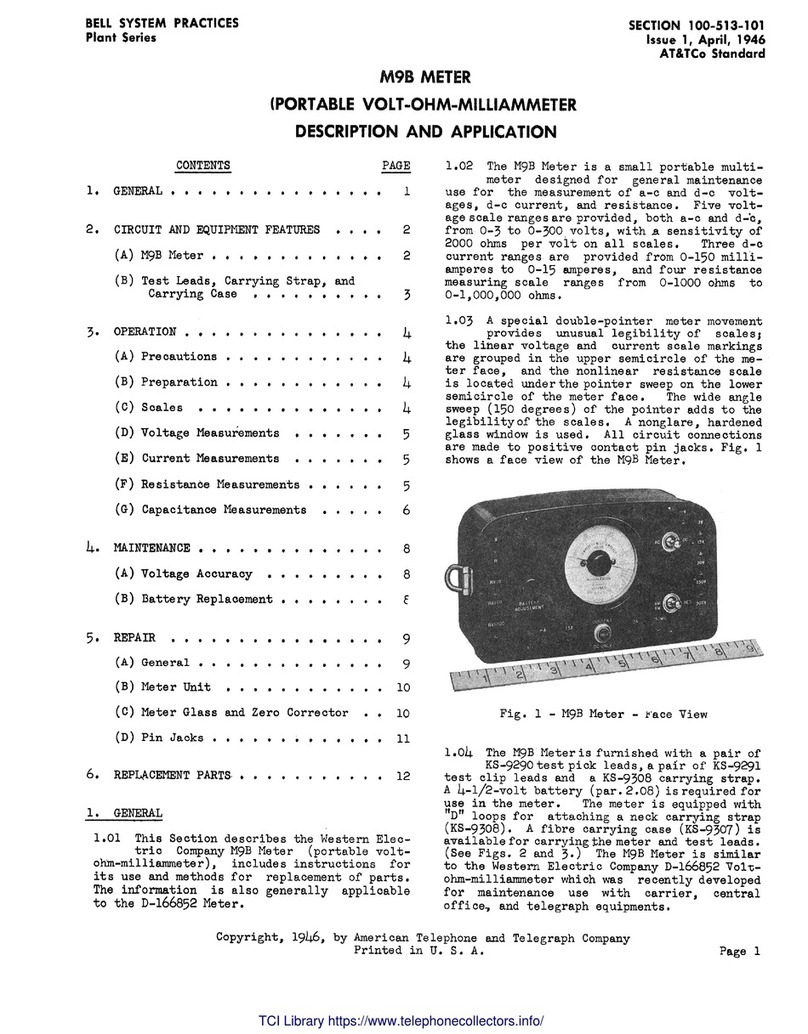
AT&T Practices AT&T 201-519-110, Issue 2
1.
General
1.01 This practice describes the Remote Record Unit (ALD3), an electronic system
that interfaces with the 13Aand
14A
Announcement Systems. This compact unit
allows the userto add
or
change recorded messages
on
either announcement system
from a remote location.
It
should be noted that any reference made to the
13A
Announcement System within the contents of this practice, will also hold true
for
the
13A+Announcement system.
The
only exception is maximum message length which is
specified in Table
A.
1.02 This practice is reissued to update information
about
the
AL03
RRU to
correspond to its feature changes and enhancements.
The
specifiC reasons for
reissue are listed below:
(a) Modify Tables B, E, and I and add Tables A, F, and G to incorporate changed
features and functionality. Also modify paragraphs 8.01, 8.14, 8.16, 8.17, 9.03,
9.04, 10.01, 10.04, 10.06,
10.08,10.10
through 10.16, and Figures 5 and 6.
Delete paragraph 8.19. Add paragraphs 10.18 through 10.25.
(b) Modifyparagraph 2.07 to include new systems with which the
AL03
interfaces.
(c) Modify Figure 5
to
correspond tothe circuit pack changes.
(d)
Modify any references
to
the
•AL02
Diagnostic Request• to indicate simply
•oiagnostic
Requesr
since more than one type
of
14A
system
now
exists.
(e) Modify paragraphs 12.03through 12.05 to incorporate
new
troubleshooting
techniques. Add paragraphs 12.06through 12.12.
(f) Add Ftgures 1 and 3
to
illustrate the system architecture.
(g) Add Appendix A to Indicate securHy code Information.
1.03 This practice contains an admonishment.
A.
WARNING:
This
equipmentgenerates,
uses,
andradiates
radio
frequency energy
and,
ifnot
installed andused
in
accordance
with
the
instruction
manual,
may
cause
interference
to
radio communications. Ithas been tested andfound
to
comply
with
the
limits for
a
Class
A computing device pursuant
to
Subpart
J
ofPart
15
of
FCC
Rules,
which
are designed
to
provide reasonable protection against such
interference
when
operated
in
a
commercial
environment.
Operation
of
this
equipment
in
a
residential area is likely
to
cause
interference.
The
user will
be
required
to
take whatever measure necessary
to
correct this interference at his/her
own
expense.
1.04 AT&Twelcomes your comments
on
this practice. Your comments will aid us in
improving the quality and usefulness
of
AT&T documentation. Please use the
Feedback Form provided at the back
of
this practice.
April1992
Pagel




























